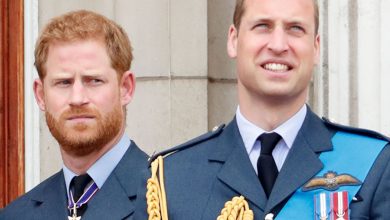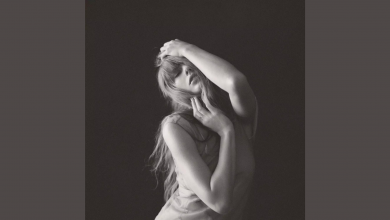A trip around Vietnam in eight coffees

Who or what is a coffee aficionado? Someone who drinks it almost every day? Someone who appreciates it? Someone who can sniff out notes from a foot away? Well, I can check only one of those boxes — I end up drinking it almost every other day, albeit in iced form.
I wouldn’t call myself a coffee buff — that title can be claimed by many, many other people in our office far more well versed in the art of the bean than I — but I do enjoy a sweet drink every now and then. I recently visited Vietnam and it was impressed upon me that I could not return without trying Vietnamese coffee, so off I went on a side quest to have a coffee every day of my trip.
Before you freak out on me, the coffee in Vietnam is almost half the price of what you get in Pakistan. It’s also much more easily available — almost every corner of the country will have a coffee stall or coffee shop. Coffee shops are to Vietnam what chai dhabas are to Pakistan, except multiply them by three.
That Vietnam is the world’s second-largest producer and exporter of coffee plays greatly into the country’s coffee culture. Coffee was introduced by the French during their colonisation rule in the 1800s, and its production was promoted heavily by the Communist Party in 1986 as a means to boost the economy. It worked, and today, Vietnam has a sizeable population of coffee shops across the country.
Much of the culture at Vietnamese coffee shops involves sitting down and relaxing. The chairs are very low — you’re almost crouching down — and no one asks you to get up once you’re done with your drink.
I saw people relaxing at coffee shops at all odd hours of the day — at 11am, 2pm, 6pm and even 12am. Interestingly, the chairs always seem to be angled towards the road rather than in circles where you’re facing your companions. It seemed like that seating arrangement was preferred because I saw very few people moving their chairs to face their friends.
It also made for a more interesting experience for solo patrons, of which there were many. People sitting at coffee shops alone were easily able to avoid conversation and people-watch. In Pakistan, the experience of sitting alone at a coffee shop isn’t half as interesting.
I went to quaint roadside cafes, and some very cute gentrified cafes and while the aesthetics may differ, the coffee didn’t really. By and large, coffee is quite cheap in Vietnam. Depending on where you go, you can get a glass of iced coffee for anywhere from 30,000 to 100,000 Vietnamese dong (approximately Rs327 to Rs1,092). The highest price we found was at the airport, but that’s to be expected because airports are known for insane prices.
The first couple of things I noticed about coffee in Vietnam is how unpretentious it is. In a world that values aroma and notes and God knows what else, this was a glass of iced coffee given to you at a roadside cafe with no fuss.
It wasn’t too rich (I did warn you that I am not a coffee connoisseur!) and it wasn’t too bitter. It was exactly what I wanted — a fun, icy, sweet drink on a hot day. One interesting thing to note is that Vietnamese coffee, or at least the coffee I tried, didn’t use milk. I’m lactose intolerant so I attempted to cross question the barista on their milk options but Google Translate failed me and I had to put my trust in them.
I later found out that a lot of coffee in Vietnam relies more on condensed milk and water than it does actual milk, which was my cue to pack away my Lactaid and try almost everything.
Vietnamese iced coffee
I’ll start with the OG — Vietnamese iced coffee or Cà Phê Sữa Đá. To put it simply, this was a basic and yummy drink.
It’s basic, it’s mildly sweet and it’s a fun drink to pick up on your way anywhere.
Coconut coffee
I don’t really like coconut, so I don’t know what I was thinking ordering coconut coffee. I think my initial instinct had something to do with coconut milk as a dairy substitute, but as I mentioned earlier, it turned out that there were no substitutes necessary.
The two coconut coffees I had were very different — the second was garnished with little coconut bits that made it grittier. The added texture was very nice.
Overall, not just something for coconut lovers — even fans of a coconut existence would like it.
Salt coffee
I ordered this completely prepared to dislike it — why would I, a connoisseur of sweet icy drinks want a salty drink? — but it was actually really interesting. The salt added an interesting element to the coffee that I’ve never experienced before.
It wasn’t a sweet drink but it was a fun one. It also didn’t taste like seawater — which is what I was concerned about.
Mocha coffee
This iced mocha coffee was my least favourite, perhaps because of how basic it was. It tasted chocolatey and like something you could get in Karachi.
Egg coffee
When I Googled food in Vietnam, one of the things at the top of everyone’s lists was egg coffee.
Apologies for a truly terrible picture of a truly delightful drink
A note on egg coffee or cà phê trứng in Vietnam — it was invented out of necessity in 1946 by Nguyen Van Giang due to a milk shortage created by the French war. Giang, who worked at the Sofitel Legend Metropole Hotel in Hanoi, whisked an egg into the coffee and created one of Hanoi’s most popular treats. It seems the hot version of this coffee is more popular because most places I went to in Hanoi weren’t offering iced egg coffee.
I loved that even their egg coffee had a history. Visiting Vietnam meant learning a lot about its war and the ingenuity of the Vietnamese people, so is it any surprise that that ingenuity extended to their food as well?
But while I appreciated the history, I was quite hesitant to try it. I’ll be the first to acknowledge how gross this coffee sounds — raw egg in your coffee? Absolutely not.
But when you think about it, raw egg can be used in a lot of different ways when it comes to dessert, like meringue. With that in mind I tried egg coffee and let me tell you, it is SWEET. The foamy cream is incredibly sweet and sits atop a layer of pretty bitter coffee. You have to mix it well otherwise you’re getting the worst of both worlds.
Honestly, this was my favourite coffee. It has even inspired me to try making iced egg coffee in Karachi. There was something about the sweet drink that was so fun — it was like a dessert! And it didn’t have an eggy smell or taste, which is what I was afraid of.
For the sake of this article, I’ll pretend that I actually ordered hot egg coffee and my order wasn’t just lost in translation. I think the iced version of this drink was far superior, but then again, I’m biased.
The moral of this story — go to Vietnam and try their coffee.




